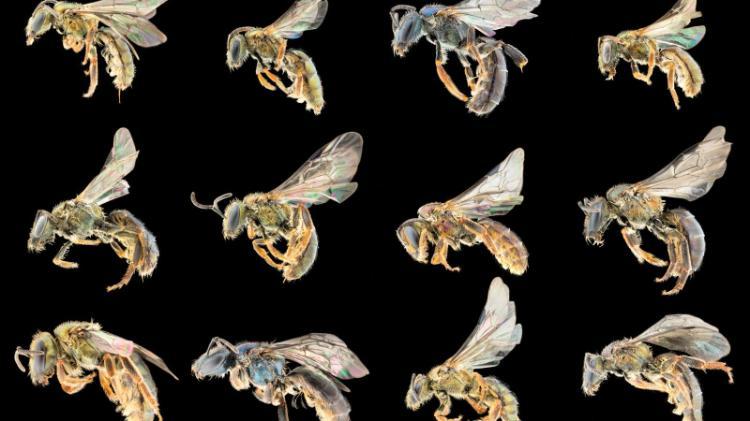October 4, 2024
Researchers discover how a bacterial powerhouse is shaping Fijian bees
What is 'Wolbachia' doing to bees and should we be worried?
Researchers have discovered a common parasitic bacteria is linked to an increase in mitochondrial diversity and surprising gender-bending properties in native bees across the Fijian archipelago.
Wolbachia is a parasitic bacteria that lives inside the cells of many insects, spiders and arthropod species. The bacteria is known for its unusual ability to manipulate its host in many ways, which includes making males look like females, killing males, or enabling females to reproduce without males. Wolbachia can even stop infected and non-infected individuals from mating, which can facilitate the formation of new species.
In Fijian bees, which have rapidly evolved from a single ancestor into at least 30 different species, researchers wanted to find out if Wolbachia played a role in this quick diversification. They also explored whether Wolbachia was responsible for the low genetic diversity found in some bee species.
The team, made up of researchers from the ÁñÁ«ÊÓƵapp of ÁñÁ«ÊÓƵapp (UOW), ÁñÁ«ÊÓƵapp of Queensland, Flinders ÁñÁ«ÊÓƵapp and ÁñÁ«ÊÓƵapp of Adelaide, revealed their findings in a new paper , published today in Symbiosis.
Evolutionary biologist , from the School of Earth, Atmospheric and Life Sciences at UOW, said Wolbachia was present in about two-thirds of the Fijian bee species tested, with most of them hosting the same strain of the bacteria.
“Surprisingly, instead of supporting the diverse evolution of these bees, it seems Wolbachia spread easily between bee species instead of co-evolving with their own species,” Dr Dorey said.
“We also found that species infected with Wolbachia had higher genetic diversity in their mitochondria compared to those without the bacteria. Usually, when Wolbachia infects a population, it spreads quickly and can reduce genetic variation.”

A composite of 12 Fijian Lasioglossum (Homalictus) species. Credit: James Dorey Photography
So, what is Wolbachia doing to our bees and should we be worried? The researchers found that while Wolbachia isn’t interested in killing its host, it does manipulate them for its own survival and benefit. Most bee species appear unaffected, but in two cases, Wolbachia appears to be getting more involved.
“In, Lasioglossum hadrander, the males are larger and have what looks like eyeliner under their eyes, which are both feminine traits. This species also appears to be the original host for Wolbachia as it has the highest genetic diversity and the longest relationship with the bee,” Dr Dorey said.
“In another species we have only so far found females despite collecting 36 specimens. We should have expected to find some males.
“It’s possible that the Wolbachia is killing males or letting females reproduce without a male partner. Because Wolbachia is passed on from females, having more females benefits the bacteria but is a potential cost to the bee.”

A comparison between the male of Lasioglossum (Homalictus) terminalis and Lasioglossum (Homalictus) hadrander. The arrow indicates the eye-liner like fovea (depression) in L. hadrander, which is usually associated with females. There are additional indications as well such larger size of L. hadrander. Credit: James Dorey Photography
Dr Dorey said the researchers have a lot to learn and future research should focus on why bee species with Wolbachia infections had higher mitochondrial diversity than those without.
“We are only just starting to tap into the surface of the interactions between our bees and their gender-bending bacterial parasites and there is certainly a lot more to learn,” Dr Dorey said.
“For example, because Wolbachia has a strong interest in host survival, it can also do beneficial things, like conveying resistance to viruses and the ability to better-synthesise vitamins. It also seems like it can play very different roles in otherwise very closely related species.
“With such a strong ability to influence host reproduction, behaviour, and even morphology, these interactions have a lot to teach us about evolution and even host conservation.”
More information
Widespread Wolbachia infection is correlated with increased mtDNA diversity in native bees across the Fijian archipelago, was published today in . It is authored by Elisha H. Freedman, Olivia K. Davies, Mark I. Stevens and James B. Dorey.
